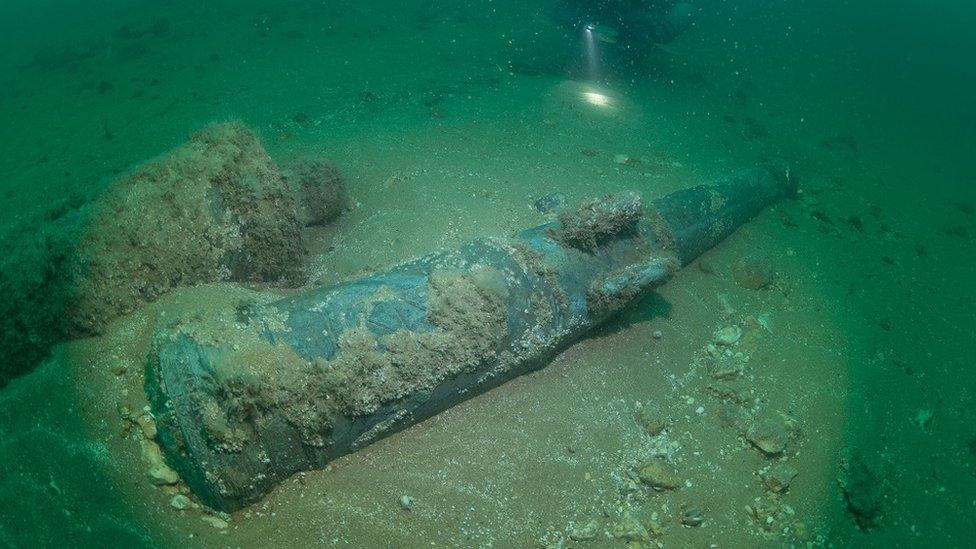Shipwreck: Scientists discover identity of mysterious warship
- Published
- comments

The ship was wrecked off the coast of England while carrying slabs of fine Italian marble, sinking in 1672
A mystery which scientists have been looking into for the last few years involving a warship has finally been solved.
The 17th century Dutch ship was wrecked off the coast of England while carrying slabs of fine Italian marble, sinking in 1672.
It was discovered many years later in 2019, but its identity remained a mystery and it was commonly referred to as the "Unknown Wreck off Eastbourne".
The shipwreck was considered so important it was granted the highest level of protection in the same year, under the Protection of Wrecks Act 1973.
How did scientists identify the ship?
Over the past year, specialists from Historic England, Cultural Heritage Agency of the Netherlands (RCE) and the Nautical Archaeology Society have been trying to identify the ship.
They used evidence gathered from the wreck by a team of professional and volunteer divers, as well as research from archives and tree ring information from the wood samples found which would have been part of the ship.
The wreck, which lies on the seabed 32 metres below the surface, has now been identified as the Dutch warship Klein Hollandia.
Built in 1656 and owned by the Admiralty of Rotterdam, the ship was involved in all major battles in the second Anglo-Dutch war from 1665 to 1667.
What did they find in the wreck?
"From our very first dive on the wreck, back in April 2019, we have been fascinated by the range of material on the seabed," said Mr Beattie-Edwards who is the chief executive of the Nautical Archaeology Society."
"The impressive amount of wooden hull structure, the ship's cannons, the beautifully cut marble tiles, as well as the pottery finds, all point towards this being a Dutch ship from the late 17th century coming back from Italy.
A Nautical Archaeology Society diver handles a Bellarmine jug found at the wreck site
Why is this discovery important?
The experts say the wreck's condition is remarkable and could offer lots of important information about how 17th century Dutch ships were built, as well as the activities of this particular warship during its final voyage before it eventually sank.
"The identification of the Klein Hollandia offers a glimpse back into the 17th century, giving us a chance to learn more about the maritime history of this period and to uncover treasures which have been underwater for hundreds of years," said heritage minister Lord Parkinson.
Detail of a marble tile found at the wreck site
The marble tiles found on the ship would have from the Apuan Alps quarries in Italy.
The tiles, which were bound for the Netherlands and would have been used to build high-status homes, were kept by Historic England archaeological conservators before the investigations on the ship began.
"I am very pleased that, thanks to this partnership between the UK and the Netherlands, we have been able to solve some of the mysteries linked to this wreck - and to protect it for future generations to continue to research," said Lord Parkinson.
- Published18 January 2021
- Published14 February 2016
- Published5 April 2022
- Published10 March 2022
